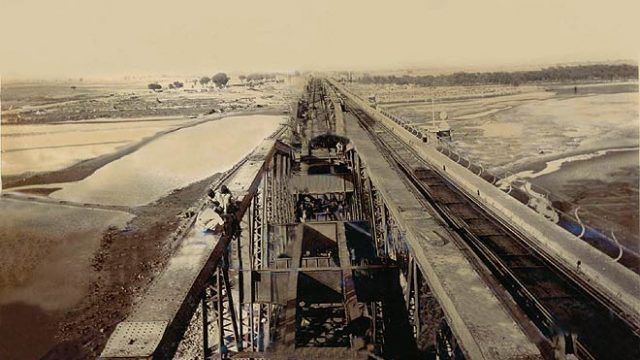Of all the bridges constructed by the railways, the ‘Lohe ka Pul’ or the Old Yamuna Bridge in Delhi is one of the oldest, and the most iconic reminder of the early engineering capability of the Indian railway companies. Before the bridge was built passengers travelling to the capital from Lahore and Calcutta were ferried across the river in boats. The building of the bridge changed that, led to a large increase in rail traffic and redefined the boundaries of the city.
Work on the bridge started in 1863, barely five years after last Mughal emperor Bahadur Shah Zafar had been exiled to Rangoon, and finished in 1866. The bridge, consisting of 12 spans of over 200 inches each, was an engineering marvel of it’s times, and cost the East India Railway Company the exact sum of Rs 16,16,335. Initially it had a single railway line, and was converted to a double line in 1913. It was reinforced in 1934 when the Northern Railways found it incapable of bearing the heavier traffic of the times. While the bridge hasn’t inspired much poetry, and does not figure much in literature (not surprising given that it’s bulky design is inspired by brute Industrial Revolution functionality), it has been noticed by travellers to the city. One of the earliest references to the bridge is in Lippincott’s Magazine of Popular Literature and Science of 1876, where it is referred to as the “great tubular bridge over the Jumna.”
The bridge has withstood many floods—the most devastating of which was in 1978 when large parts of the city were submerged. To this day the water level of the Yamuna is measured at the bridge—and whenever the level of the river at the bridge crosses the danger level areas downstream are evacuated. It has also become part of the routine life of the city—daily commuters to the city know they’ve arrived when the train rattles over the bridge. And the devout (especially on trains coming from Uttar Pradesh) make it a habit to toss a few coins into the river which are promptly fished out by little boys who hang around the banks.




